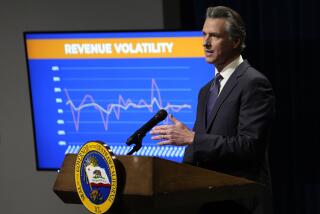Coverage of Prop. 186
- Share via
I am shocked by your biased coverage of the Health Security Act, Prop. 186, on the Nov. 8 ballot. The poll published Sept. 11 asked whether voters favor a government-run health plan costing $75 billion in new taxes. This pejorative description of Prop. 186 assured the most negative response. The Oct. 5 article continues this one-sided coverage.
Nowhere in the long article is there a description of the current health care crisis in California and the United States which has led to Prop. 186. This is a crisis driven by giant insurance companies and for-profit health maintenance organizations.
Two years ago 45% of Californians were covered by “managed care” plans. This year the figure is 85%. The “for-profits” employ saturation advertising and solicitation of patients to draw them away from their independent physicians. The physicians are forced for economic survival to join the HMOs under any terms presented.
What savings are accomplished by the “for-profits” are by cost shifting and hard bargaining with hospitals. The hospitals are underutilized. They cannot afford to turn down drastically reduced rates paid by the HMOs. HMOs spend on the average 24 cents of every health care dollar on overhead, advertising and lobbying.
The article quotes the president of Cigna Health Care System and his rhetorical question is “if someone would like to show me a government agency capable of creating the fourth or fifth largest health care system in the world and manage it well, I’d like to see it.” He sees it everyday. Medicare is that agency. It operates on an overhead of 2.5% in contrast to 24% in the health insurance industry.
Prop. 186 is sound fiscally, based on very conservative fiscal analysis; $75 billion in taxes replaces present health care premiums in a system that is costing Californians $100 billion this year. There will be a 4% cap on overhead. Spending under Prop. 186 can only rise with an increase in population or gross domestic product.
Under 186 companies with 10 or fewer employees will pay 4.4% of payroll for health care. Employers with more than 50 employees will pay 8-9%. Besides these savings, the cost for medical care in workers’ compensation and disability insurance will disappear.
Individuals will pay 2.5% of their California taxable income for health care and will save so much on premiums and out-of-pocket payments that net costs for health care will decline for the large majority. This will be comprehensive care that is non-cancelable and provides free choice of doctors.
ROBERT M. PECK MD
Assistant Professor of Medicine
UCLA School of Medicine
More to Read
Get the L.A. Times Politics newsletter
Deeply reported insights into legislation, politics and policy from Sacramento, Washington and beyond. In your inbox twice per week.
You may occasionally receive promotional content from the Los Angeles Times.










